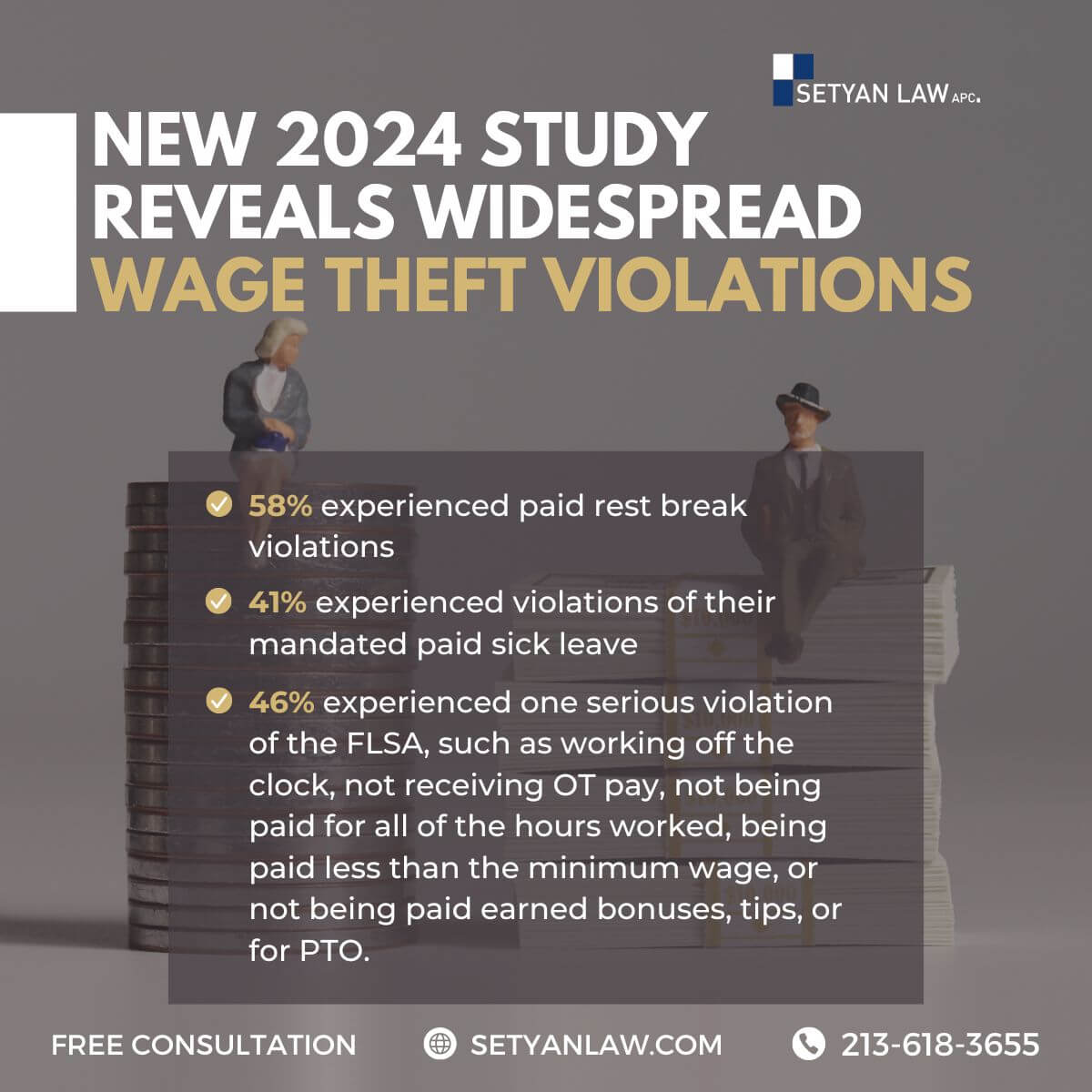Updated May 30, 2025
How to Calculate Reporting Time Pay in California: A Step-by-Step Guide
Despite this important protection, many California employees don’t receive the compensation they’re legally entitled to. This happens partly because employers don’t understand their obligations, but also because workers themselves aren’t aware of their rights.
Essentially, if you report to work as scheduled but are given fewer hours than expected or sent home without work, California law requires your employer to pay you for a minimum number of hours—regardless of how long you actually worked.
However, calculating exactly what you’re owed can be confusing. The formula involves considering your scheduled hours, how long you actually worked, and applying specific minimum and maximum rules established by the California Industrial Welfare Commission.
Whether you’re an employee trying to ensure you’re being paid correctly or an employer wanting to comply with state regulations, understanding the step-by-step process for calculating reporting time pay is crucial. In this guide, we’ll break down everything you need to know about reporting time pay in California, from the basic legal requirements to handling complex scenarios.
Understanding Reporting Time Pay in California
California’s labor laws offer robust protections for workers, especially concerning unexpected changes to work schedules. Reporting time pay stands as a crucial safeguard for employees who find themselves sent home early or given fewer hours than anticipated.
What the law says about reporting time pay
The legal framework for reporting time pay in California is established in the Industrial Welfare Commission (IWC) Wage Orders 1-16, Section 5. These regulations create specific requirements for when employers must compensate employees who report to work but receive less than their expected shifts [1].
The fundamental rule states that when an employee reports for a scheduled shift but is given less than half of their scheduled day’s work, the employer must pay for half of that scheduled shift. Furthermore, this compensation must be:
No less than 2 hours of pay
No more than 4 hours of pay
Paid at the employee’s regular rate [2]
For instance, if you’re scheduled for an 8-hour shift but are sent home after just 1 hour, you must receive 4 hours of pay (half your scheduled shift) [1]. Conversely, if your scheduled shift was only 4 hours and you worked 1 hour before being sent home, you’re entitled to 2 hours of pay [1].
The law also addresses situations when employees are called back for a second shift in the same workday. If you report a second time and work less than 2 hours during that second reporting, your employer must pay you for a minimum of 2 hours at your regular rate [3].
According to the California Supreme Court in Murphy v. Kenneth Cole Productions, Inc. (2007), reporting time pay legally constitutes wages [2]. Consequently, failing to include reporting time pay in a final paycheck can result in waiting time penalties under Labor Code § 203 [2].
Notably, in Ward v. Tilly’s, Inc. (2019), the court expanded the definition of “reporting” beyond physical appearance at the workplace. Reporting now includes:
Logging on remotely
Appearing at a client’s job site
Setting out on a trucking route
Telephoning two hours before a shift to confirm it [2]
Why this rule exists and who it protects
Reporting time pay regulations serve two primary purposes: “to compensate employees” and “encourage proper notice and scheduling” [2]. These rules protect non-exempt (hourly) employees from financial hardship caused by unpredictable scheduling practices.
Many workers face significant challenges when arranging transportation, childcare, or adjusting personal schedules to meet work obligations. These arrangements often involve costs and inconveniences that become wasted when shifts are unexpectedly shortened [1].
Additionally, the regulations aim to:
Penalize employers for requiring employees to report without providing adequate work
Protect workers from erratic and unreliable schedules
Encourage businesses to improve staffing accuracy
Shift the financial burden of shortened shifts from employees to employers [3]
For hourly workers who depend on consistent income, sudden schedule changes can significantly impact financial stability. The reporting time pay requirement ensures these employees receive at least partial compensation for their commitment to showing up as scheduled, even when circumstances beyond their control result in reduced hours [2].
Without these protections, employers might be tempted to overstaff and routinely send workers home early, transferring the financial risk of business fluctuations entirely to their employees.
When Reporting Time Pay Applies
Understanding exactly when California’s reporting time pay law applies is critical for both employers and employees. The regulations cover various work situations beyond the obvious scenarios many people assume.
Reporting for regular shifts
Reporting time pay requirements kick in primarily when non-exempt employees show up for their scheduled shifts but receive fewer hours than expected. The rule applies whenever:
You report to work as scheduled and are ready to work
Your employer provides less than half of your scheduled shift
The employer, not you, initiates the early dismissal
For example, a restaurant server scheduled from 11 a.m. to 5 p.m. who gets sent home at 2 p.m. due to low customer turnout is entitled to reporting time pay [4]. Even though they worked 3 hours of a 6-hour shift, they still receive half of their scheduled hours (3 hours of pay) since they worked less than half their scheduled time.
Importantly, if you voluntarily leave work early for personal reasons, reporting time pay doesn’t apply [5]. The Department of Industrial Relations clarifies that reporting time pay is required only when the employer deprives the employee of the opportunity to work.
Second reporting in a single day
Separate rules apply when you’re called back to work a second time in a single workday. In such cases, if you’re furnished less than 2 hours of work during that second reporting, you must be paid for a minimum of 2 hours at your regular rate [6].
Consider this scenario: After being sent home early from your morning shift, your employer calls you back at 6 p.m. for an evening rush. The rush quickly subsides, and you’re sent home again at 7 p.m. Although you only worked one hour during this second reporting, you’re entitled to 2 hours of pay [7].
Moreover, this rule applies regardless of whether you worked a full shift earlier in the day. The second reporting time pay is completely separate from any reporting time pay owed for the first shift [3].
Remote work and call-in scenarios
Until recently, many assumed reporting time pay only applied when employees physically showed up at a workplace. Nevertheless, in the landmark case Ward v. Tilly’s, Inc. (2019), the court established that physical reporting isn’t always necessary [2].
The court determined that “reporting for work” happens whenever employees present themselves as instructed by their employer, which may include:
Logging onto a computer for a remote shift
Appearing at a client’s job site
Setting out on a trucking route
Calling in to confirm a shift (as in the Tilly’s case)
This expanded definition particularly affects on-call and standby arrangements. For instance, if you’re a truck driver who begins your workday from home and your dispatcher cancels your route before you leave, you’re still eligible for reporting time pay since you were available and ready to work as scheduled [4].
Similarly, call-in scheduling practices where employees must phone shortly before shifts to confirm whether they’re needed can trigger reporting time pay obligations. The court in Tilly’s found this practice particularly burdensome since it prevented employees from making other arrangements while waiting to learn if they’d be working [3].
On-call time may also qualify for reporting time pay if the employer exerts significant control over the employee’s time, effectively preventing them from using that time for personal purposes [8].
Through these provisions, California law aims to create more predictable work schedules while ensuring employees receive fair compensation when their employers’ scheduling practices disrupt their lives.
Exceptions to Reporting Time Pay
While California law provides strong protections for workers through reporting time pay requirements, certain situations exempt employers from this obligation. Understanding these exceptions helps both employees and employers navigate unexpected work disruptions.
Acts of God and utility failures
California labor regulations recognize that some events fall outside an employer’s control. Primarily, reporting time pay isn’t required when work interruptions stem from an “Act of God” [2]. These natural disasters include:
Earthquakes
Floods
Tornadoes
Wildfires
Similarly, utility-related failures exempt employers from paying reporting time wages. This applies specifically when:
Public utilities fail to supply electricity
Water service is interrupted
Gas delivery is disrupted
The sewer system malfunctions [2]
For instance, if a power outage during a storm forces a business to close early, employees sent home aren’t entitled to reporting time pay [9]. Yet, employers should exercise caution with this exception. Minor weather inconveniences that don’t impact utilities or safety typically won’t qualify for exemption [10].
Threats to safety or property
Reporting time pay requirements are suspended under these circumstances:
First, when operations cannot begin or continue due to threats to employees or property [2]. This includes situations like bomb threats, workplace violence concerns, or imminent dangers.
Second, when civil authorities recommend work shouldn’t begin or continue [2]. This might occur during public emergencies, evacuations, or hazardous conditions.
As an illustration, if a car crashes through a storefront, making the workplace unsafe, employees sent home as a result wouldn’t qualify for reporting time pay [7].
Voluntary early departures
Perhaps the most straightforward exception involves employees who choose to leave work early. In such cases, California law is clear: reporting time pay isn’t required [3].
This exception applies whenever an employee voluntarily leaves their shift for personal reasons [2]. The key distinction is who initiates the early departure—the employer or the employee.
Consider this scenario: You’ve worked three hours of your eight-hour shift but need to leave early for a doctor’s appointment. Since you’re choosing to depart early, your employer isn’t obligated to provide reporting time pay [7].
The Department of Industrial Relations emphasizes that reporting time penalties only apply when employers deprive employees of their opportunity to work [2]. Therefore, when employees make their own decisions to cut shifts short, they forfeit potential reporting time compensation.
How to Calculate Reporting Time Pay Step-by-Step
Calculating reporting time pay correctly requires following a systematic approach that accounts for several factors. Once you’ve determined that reporting time pay applies, these five steps will help you calculate the correct amount.
Step 1: Determine scheduled hours
First, identify exactly how many hours the employee was scheduled to work for that particular shift. This is the foundation of your calculation and must be based on the original schedule, not any modified version after the fact. For instance, if an employee was scheduled for a six-hour shift at a department store, this is your starting point.
Step 2: Check how many hours were worked
Next, document precisely how many hours the employee actually worked before being sent home. If they clocked in and worked for one hour before being sent home due to lack of work, this becomes your worked hours figure.
Step 3: Apply the half-day rule
Subsequently, calculate half of the scheduled shift hours. This represents the amount California law requires employers to pay when an employee works less than half of their scheduled shift. Using our example, half of a six-hour shift equals three hours.
Step 4: Apply the 2-4 hour minimum/maximum rule
Indeed, California law sets clear boundaries on reporting time pay. The employee must receive:
No less than 2 hours of pay, regardless of scheduled shift length
No more than 4 hours of pay, even for longer shifts
Hence, if half of the scheduled shift calculates to less than 2 hours, the minimum 2-hour rule applies. Likewise, if it exceeds 4 hours, the 4-hour maximum applies.
Step 5: Use the regular rate of pay
Finally, multiply the hours owed by the employee’s regular rate of pay—not just their base pay rate. The regular rate includes the base rate plus shift differentials, bonuses, commissions, and nondiscretionary payments.
For second reporting scenarios, the calculation differs slightly. When an employee reports to work a second time in the same workday and works less than 2 hours, they must receive 2 hours of pay at their regular rate, regardless of how much they actually worked during that second reporting.
Remember that reporting time pay constitutes wages under California law, meaning it must appear on pay stubs and be included in final paychecks. Failing to include reporting time pay in a terminated employee’s final check may trigger waiting time penalties.
Special Cases and Edge Scenarios
Beyond the standard scenarios, California reporting time pay includes several special cases that require specific handling.
Meetings and training sessions
Mandatory meetings trigger reporting time pay requirements when canceled or shortened. If a meeting lasts less than half the scheduled time, employers must provide reporting time pay [2]. For instance, if you attend a one-hour training after your regular shift, your employer must pay you for a minimum of two hours—one for the actual training plus one hour of reporting time pay [2].
Additionally, employers must pay for mandatory training even when conducted outside regular work hours. In fact, attendance at lectures, meetings, and training programs counts as compensable work time unless it meets all four exemption criteria: it occurs outside normal hours, is voluntary, not job-related, and no other work is performed concurrently [11].
Split shifts and on-call work
Split shifts—work schedules interrupted by unpaid non-working periods—create additional payment obligations. A split shift occurs when a work schedule includes an unpaid break exceeding one hour (not a meal period) that separates two work periods [12].
For example, a restaurant worker scheduled 10:00 a.m. to 1:30 p.m. and then 4:00 p.m. to closing has a split shift [12]. Employers must pay minimum wage workers an additional “split shift premium” equal to one hour at minimum wage [12].
On-call time at the worksite always counts as compensable hours. Off-site on-call time may be compensable depending on employer-imposed restrictions, including geographic limitations, response time requirements, and ability to trade on-call responsibilities [13].
COVID-19 and health-related send-homes
Remarkably, sending employees home for COVID-19 symptoms typically requires reporting time pay [14]. Despite the pandemic’s unprecedented nature, California’s Department of Industrial Relations maintained that reporting time pay applies even during a state of emergency, unless authorities specifically recommend ceasing operations [15].
Practically speaking, even when employers establish policies requiring symptomatic employees to stay home, those who report to work and are subsequently sent home due to symptoms are entitled to reporting time pay [14]. Most legal experts advise paying reporting time pay in these situations rather than risking potential litigation and penalties [14].
Conclusion
Reporting time pay represents a critical protection for California workers facing unpredictable scheduling practices. Throughout this guide, we’ve examined how these regulations safeguard employees who report to work only to find their shifts cut short or canceled.
California labor law clearly establishes that employers must compensate workers for at least half their scheduled shifts when sent home early, with specific minimum and maximum requirements. Additionally, we’ve explored various scenarios where reporting time pay applies, from regular shifts to second reporting situations and even remote work arrangements following the landmark Tilly’s case decision.
Certainly, exceptions exist for situations beyond employer control, such as natural disasters or utility failures. Nevertheless, these exemptions remain limited and specific, ensuring workers receive fair compensation in most circumstances.
Understanding the five-step calculation process proves essential for both employees seeking their rightful pay and employers aiming to comply with state regulations. Most importantly, recognizing that reporting time pay constitutes wages means it must appear on pay stubs and final paychecks to avoid potential penalties.
Special cases like mandatory meetings, split shifts, and even COVID-19-related send-homes further demonstrate the robust nature of California’s worker protections. Though often overlooked or misunderstood, reporting time pay stands as a fundamental right that supports financial stability for hourly workers.
Armed with this knowledge, employees can better advocate for their rights while employers can implement proper scheduling practices that minimize unnecessary reporting time payments. Ultimately, these regulations create a more predictable and fair work environment that benefits California’s entire workforce.
References
[1] – https://calljustice.com/reporting-time-pay-in-california/
[2] – https://www.dir.ca.gov/dlse/faq_reportingtimepay.htm
[3] – https://www.employers.org/blog/2024/05/30/default/tricky-reporting-time-pay-rules/
[4] – https://www.kingsleykingsley.com/blog/2017/august/california-law-and-reporting-time-pay-
[5] – https://calchamberalert.com/2023/05/12/reporting-time-pay-when-its-owed-depends-on-circumstances/
[6] – https://www.dir.ca.gov/dlse/wages.pdf
[7] – https://www.shouselaw.com/ca/blog/reporting-time-pay-california/
[8] – https://nosratilaw.com/blog/california-on-call-and-standby-time-policy/
[9] – https://www.employers.org/blog/2025/01/08/default/how-to-navigate-natural-disasters/
[10] – https://www.employers.org/blog/2024/08/08/default/employee-rights-during-natural-disasters/
[11] – https://www.dol.gov/agencies/whd/fact-sheets/22-flsa-hours-worked
[12] – https://www.dir.ca.gov/dlse/split_shift.htm
[13] – https://www.dir.ca.gov/dlse/callbackandstandbytime.pdf
[14] – https://www.employers.org/blog/2021/04/29/default/sending-home-symptomatic-employees-is-reporting-time-pay-owed/
[15] – https://www.dir.ca.gov/dlse/2019-novel-coronavirus.Htm
Call Setyan Law at (213)-618-3655 to schedule a free consultation.






